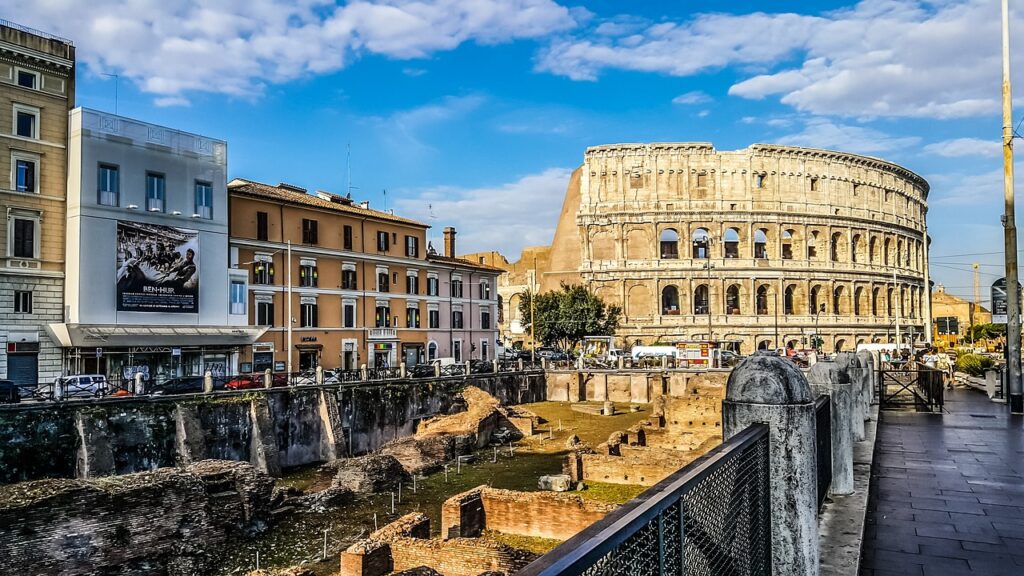Blog
Overseas Removals to Rome with Hamiltons Removals

Rome is known throughout the world as ‘The Eternal City’ – so-called because its citizens (and particularly some of its poets) felt that it would last forever, unlike some of the Empires and governments which ruled over it.
These days, thousands of Britons have chosen to make the city their home, attracted by the warm climate and the job opportunities, particularly in the fields of medicine, engineering and teaching, as well as Rome’s cultural history.
Hamiltons Removals can offer overseas removals to Rome; here we look at the history of the Italian capital, how to get there, and how much it is likely to cost to move and live there.
History and Heritage
One of the myths surrounding Rome is that it was built by Romulus and Remus, a pair of twins; the former is said to have killed the latter after an argument and the city took its name from him in the mid-8th century.
The reality is rather different – the area was a series of smaller settlements (evidenced by various discoveries of Bronze and Iron Age artefacts) and grew gradually after that. It became the focal point of the Roman Empire, which stretched across Europe (including into England). After the Empire collapsed, due largely to various revolutions and wars in occupied countries, Italy was fragmented into various city states. It wasn’t until the mid-19th century that the unified country of Italy was formed.
However, the evidence of the historic importance of the city can still be seen today in the vast array of ancient Roman structures still standing, such as the Colosseum, the Pantheon, the Castel Sant’Angelo and the Arch of Constantine; all of them are incredibly popular tourist destinations in the city.
Getting There and Getting Around
There are two international airports in Rome – Fiumicino International Airport (aka Leonardo da Vinci airport), which is the main one, 30km (18miles) to the south of the city – you can get to the city proper via a shuttle bus, train or taxi. The smaller airport, Ciampino, is closer to the city but is largely used by budget airlines for local and short-haul flights.
While all roads lead to Rome and getting there is quite easy, driving in the city itself isn’t. There is a motorway around the city, known as the GRA, but driving in the city centre is not for the faint-hearted. Driving can be rather chaotic (even for locals), as can finding a parking space.
As with the case with many other metropolitan cities around the world, it’s much better to rely on public transport – if you buy a Roma pass you get access to all forms of public transport in the city, and reduced admission prices to some museums and attractions as well.
There are six tram lines and three metro lines to choose from; many people opt for the bus, although these can sometimes be crowded depending on the time of day. There’s also a suburban overground railway network; the main station in the centre is the Roma Termini.
Cycling is an option, but there isn’t a large network of dedicated lanes and the behaviour of motorists (not to mention the cobbled streets which can be uncomfortable to ride on) mean bike riding isn’t as popular as it is in other European cities.
Traveling on foot may also be an option if you don’t mind avoiding the traffic (and some streets are so narrow, vehicles can’t get down them all anyway) but some of the attractions may be a long way away.
The Main Attractions
Rome is usually divided into a series of districts and, although the Old Rome district does boast the Pantheon, plenty of beautiful squares and several cathedrals, and plenty of evidence of the Renaissance influence on its art and architecture, it’s not home to all the historic buildings in the city.
The Vatican is another district (and Vatican City is actually an independent country, as well as being the home of the Catholic Church); the district also includes the surrounding areas of Borgo, Prati and Monti Mario.
The Colloseum (the famous amphitheatre, pictured) is in the Colloseo district, which also includes the Forum (the ruins of the city’s former seat of Government).
The Modern Centre includes the Piazza della Republica and the Trevi Fountain (which people still throw coins into for good luck) but is now just as well known for its shopping, nightlife and restaurants.
How Much Does It Cost to Move to Italy?
As well as the cost of the moving package, you also have to consider the cost of living in the city and the country.
The websites Statista and ThinkPlutus state that the average wage in Italy is slightly higher compared to the UK and the cost of living is lower too – particularly for items like public transport (although there may be local variations depending on where in Rome you settle down).
How expensive is Rome? In terms of rent, it’s generally less expensive than Milan, but more expensive than cities such as Turin and Florence; and you can expect to pay more for your meal or shopping if you are close to the various tourist attractions.
Overseas Removals to Rome with The Moving Partnership
At Hamiltons Removals we can help you if you are interested in house removals to Italy; as well as Rome, we also offer European removals to Milan, Naples, Turin, Palermo and all the major cities.
We offer a variety of packages to fit your needs and budget – for instance you could have a dedicated service (sole use of the vehicle), or a part-load or groupage which is shared with other consignments; we can also pack and unpack your items for you
If you click here, you can receive your own free online removal quote by completing the various forms; you can also call us on 01379 855203.
« Back











